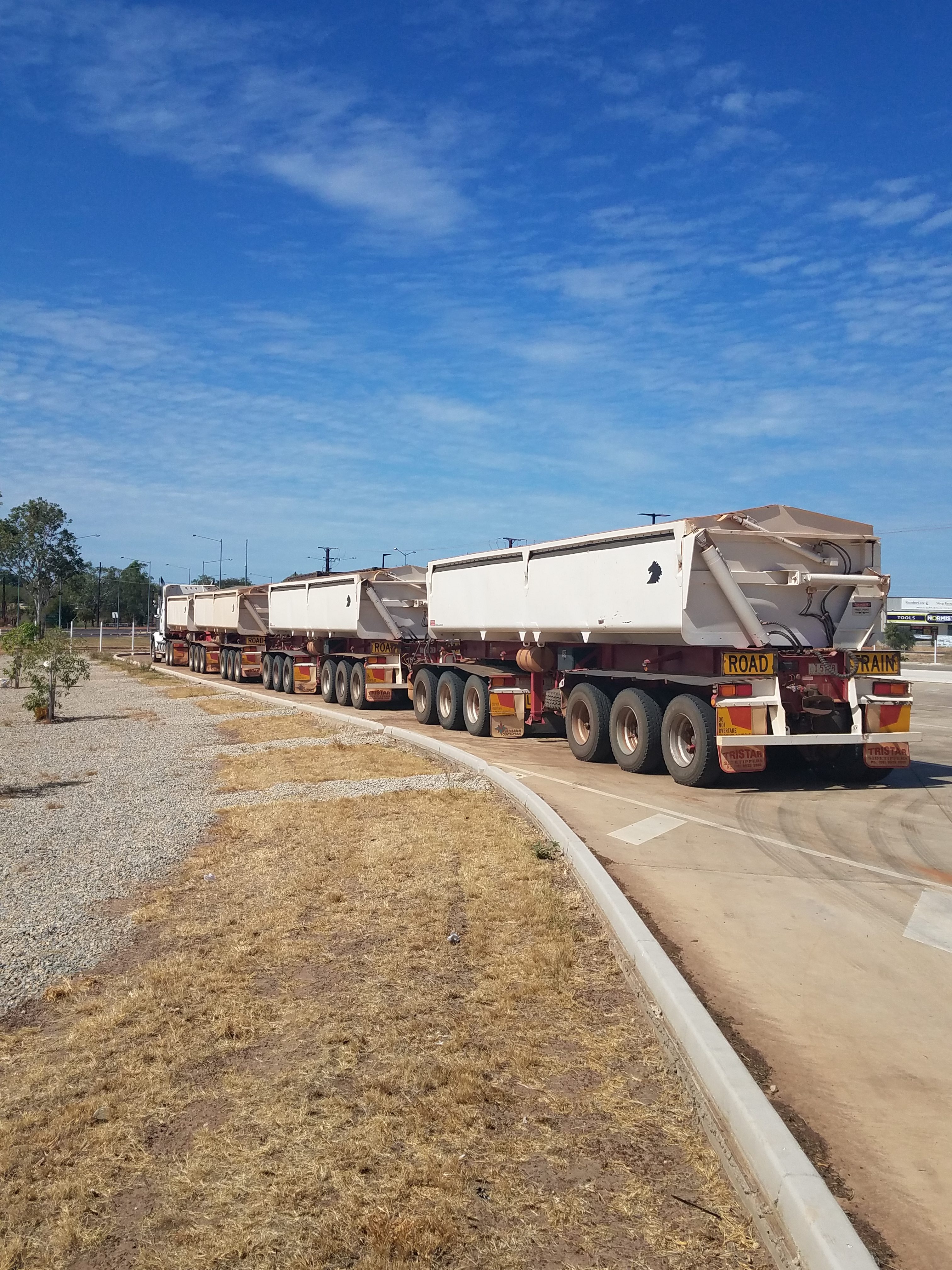Frank and Joanne encounter Road Trains in The NEVER-NEVER
Frank and Joanne encounter Road Trains in The NEVER-NEVER
Road trains are an integral part of the Australian Outback, just like kangaroos, red dust and endless horizons.
The latter can be found in all parts of Australia, but the serious roadtrains, the ones with three or more trailers, are restricted to the Australian Outback regions.
They are banned on most roads in the more populated southern and eastern states. Understandable. Those monster trucks don’t mix very well with normal traffic.
Road trains shrunk the Australian continent to a more manageable size (though that’s still relative…).
The Northern Territory, northern Western Australia and Queensland’s Outback regions (which I guess makes that all of northern Outback Australia) rely a lot on triple trains for transporting goods: fuel, ore and cattle (see pictures below) are the most common freight, but roadtrains cart everything else, too.
So what exactly are road trains?
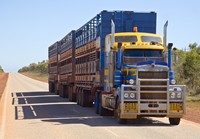
Well, all the trucks in the pictures on this page are, but not all long trucks that you see on Australian roads are.
I guess most of you will know the standard trucks with semi-trailers, that’s what you see everywhere. If you attach another articulated trailer you get a B-double, and with two articulation points even a B-triple.
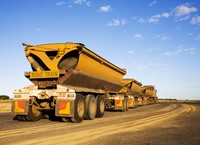
Now you may have a big heavy monster truck there, but that’s still not a road train. Those combinations are classified as “Long Vehicles“.
A proper “Road Train” has two or three normal trailers, connected by converter dollies. That combination is between 36.5 and 50 metres long. With a special permit you can also run whats called an A-B quad.
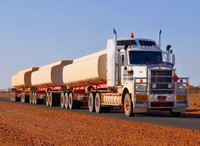
That’s two normal full length trailers attached to the rear of a B-double, which brings the full length to 53.5 metres. That’s the maximum allowable on normal roads, but there are many private roads and mining roads in Outback Australia where you can find even longer rigs.
Anyway, I imagine those fine differences don’t matter much to tourists.
The main point is that you can find the two trailer trains through a lot of rural WA, of course across the Nullarbor desert, and even through some of Victoria and New South Wales. But to see the serious three trailer rigs you will have to visit us up here in the north. (But you were going to do that anyway, weren’t you?)
Some of the best places to see real road trains in the wild are the Stuart Highway north of Alice Springs, and the Victoria/Great Northern Highway between Katherine and Broome. And if your travels take you off the beaten track in an area near a big mine, or into some serious cattle country, you may even get to see four or more trailer road trains…
Driving With Road Trains
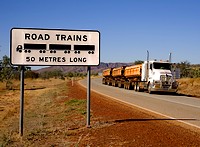
A roadtrain may be over 50 metres long and can weigh up to nearly 200 tonnes!
200 tonnes moving at considerable speed aren’t going to stop in a hurry. Those monsters can’t even slow down or change direction in a hurry, so don’t expect them to do so because you’ll end up in trouble and guess who’ll win?
The drivers of the big trucks are the most courteous, considerate and responsible of all drivers on Australian Outback roads. The bigger the rig, the more courteous, considerate and responsible the driver (in my experience as both a driver on Outback roads, but also as a frequent guest in the cab, as I’ve spent a lot of time hitchhiking in the Australian Outback).
They have a hard and often lonely job and carry a big responsibility, so don’t make their life more difficult than it needs to be:
- Never ever cut in front of a big truck. Not at traffic lights, roundabaouts, turn offs, not on the highway, nowhere. They need a LOT of room to slow down and stop, and they need all the space that’s there if they need to turn.
- The sign saying, “Do not overtake turning vehicle“, means the driver is trying to tell you to not overtake the turning vehicle, so don’t overtake it! If a driver is indicating he wants to turn left he will most likely move right first because he needs room to turn! And there are many blind spots around a truck that size…
- Always give them plenty of space. On the highway stick to the left of your lane, because they will take up at least the full width of theirs. If you need to stop move away from the road if at all possible.
- If a road train is about to overtake you don’t slow down until the road train has fully moved over to the other lane!
- If you overtake a road train make sure you have lots of clear road ahead. Don’t underestimate the time it takes to overtake a 50 metre train if you are only marginally faster… Only move back into the left lane once you can see both headlights in your mirror, and don’t slow down now!
- On single lane highways slow down when you see an oncoming truck, carefully pull off the road and drive on the shoulder.
- On unsealed roads slow down when you see an oncoming truck. The dust they kick up will obscure your vision. If you are driving behind a road train keep a safe distance and turn on your headlights so the driver knows you are there in that dust cloud… Or even better, pull over and have a coffee break. It’s no fun to drive behind a road train on an unsealed road, as the video below clearly shows:

